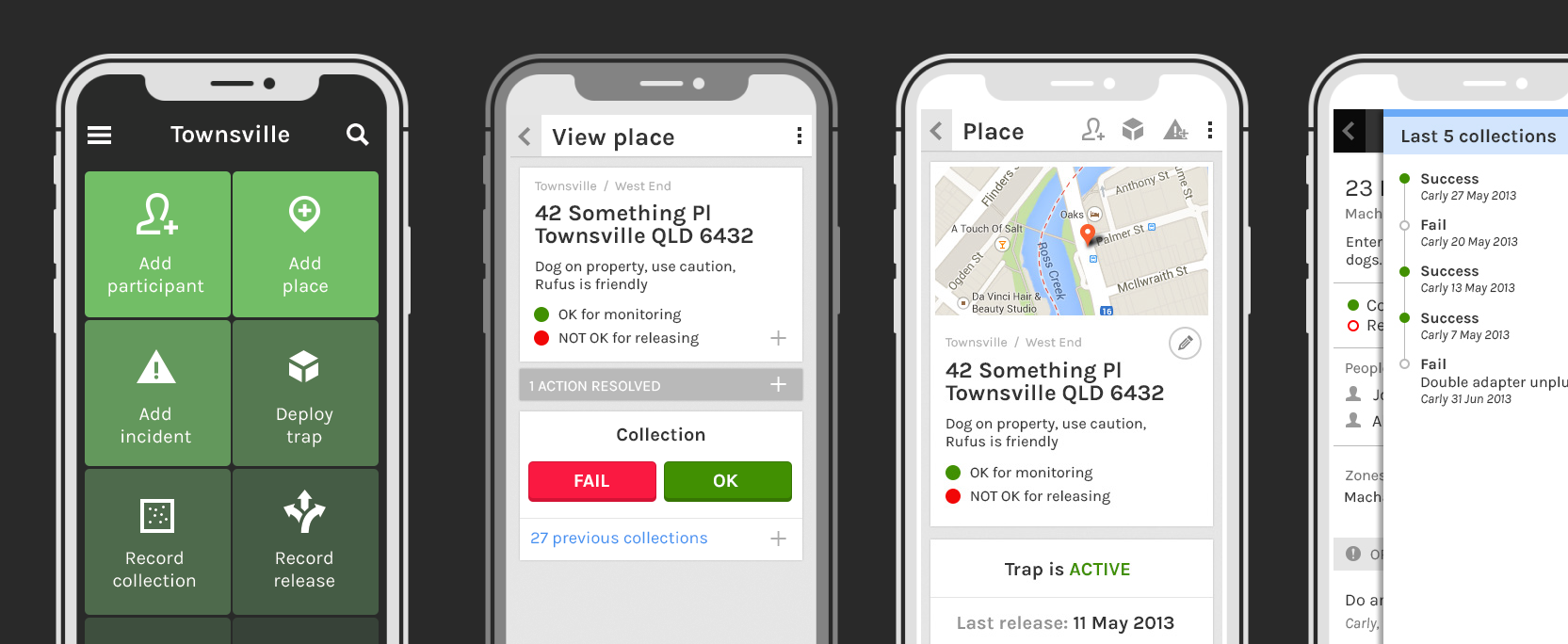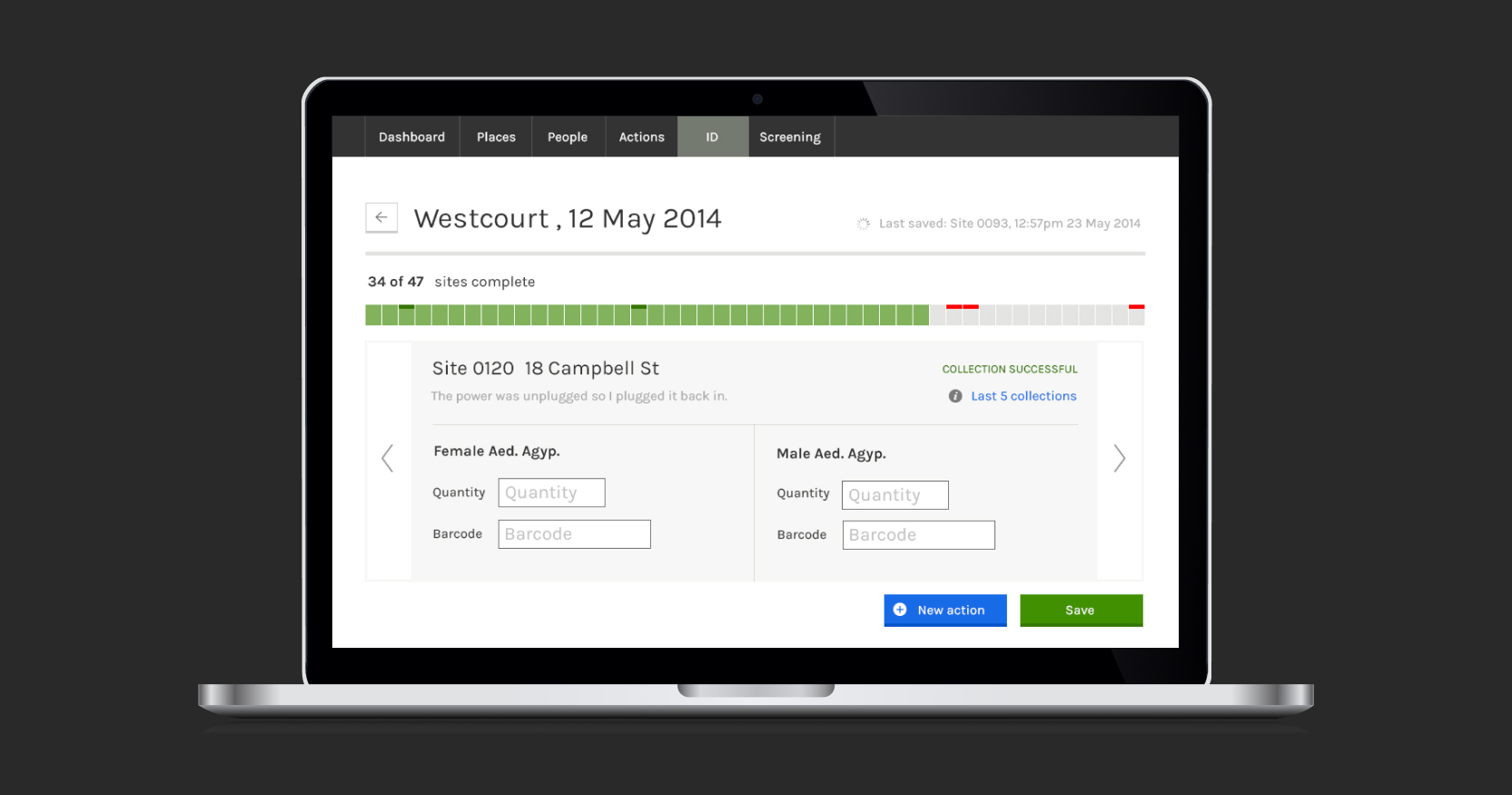Eliminate Dengue (now called The World Mosquito Program) aims to help communities around the world prevent the spread of mosquito-borne disease. Using ground-breaking bacterial implant technology in wild mosquito populations, the program that was trialled in Australia has now scaled globally and is operating in over 11 countries and affecting hundreds of thousands of lives.
Key impact
In 2014, as part of the Cogent product team, Matt led the design and research for a data collection tool to help field officers track and trace the efficacy of altered mosquito populations in Northern Australia. Through Matt and the team’s work, efficiency and accuracy of data collection doubled saving thousands of officer hours and providing a template for a tool to scale to high-density dengue countries like Vietnam, Colombia, and Brazil.
An immediate 2x improvement in the speed of releasing, capturing, and processing field data
- Field research to understand and document the end-to-end process of the Wolbachia replacement release and capture method
- Facilitation of co-design and collaboration officers with digital experts and field officers
- End-to-end product design across mobile and desktop interfaces
- An immediate 2x improvement in the speed of releasing, capturing, and processing field data
Documenting the scientific method and the people within
To achieve a vision of such ambition requires teams of specialists working together rigorously across the East Coast of Australia – each playing their role in the complicated process of breeding, releasing, & capturing mosquitos, as well as analysing the data. With a digital tool required to facilitate the flow of information between all parties, it was important to ‘ride-along’ with each user group to understand the day-to-day tasks each had to complete.

No one likes change and most people are proud of the processes they’ve designed for their own work. Showing them that it could be even better requires building trust and rapport first. To say, I’m on your side, let’s work together. And for them to respond with, OK, let’s do this.
We only have to do 3 out 10 steps now. It’s so intuitive, we don’t even need to train anyone on it!
- Field entomologists: Teams who work on releasing mosquitoes, and manage the trapping of samples, are typically split in their time between being out in the field, and being based in an office.
- Lab Managers and technicians: Staff who analyse the samples from the field (e.g. to determine if Wolbachia is present, or to establish the sex of mosquitoes collected) are based in either a ‘field laboratory’ (a lab located near the #eld site) or in a main laboratory (such as at the University partner).
- Community Engagement Officers: Team members who work directly with establishing the support or managing concerns of the community spend a mix of their time in the field, and in the office.
- Ad hoc users: People who interact with the system infrequently, most likely to use it’s output for their own work i.e. Map specialists to optimise for route planning
Answering big questions, iteratively and together
It can sometimes be difficult to insert a tool or process into a complex system without disrupting the regular cadences that the teams and systems have set up to do their everyday work. Matt facilitated an iterative approach to a build, test, release cycle to answer fundamental questions quickly – e.g. Would the network connection across North East Australia be reliable enough for the use of mobiles in the field?

Working alongside key user groups, the product team slowly but surely built the riskiest pieces of the platform first, checking the solution’s effectiveness regularly to ensure that we weren’t designing ourselves into a corner we couldn’t get out of.

The results
In short, the releasing team saw an immediate doubling of their release efficiency and the data team reported higher accuracy and faster turnaround of the analysis of the data. This in turn meant that the field team could plan routes faster, more efficiently, and, ultimately, handle higher volumes of data without having to scale the number of people working on the project.

It’s revolutionised mapping for us. I can spend more time analysing data rather than fixing it – Jack Brown-Kenyon, GIS specialist
Beyond the project, to the world
Tracker, as it became affectionately known, provided a foundational and functional proof-of-concept for a data tool that could be easily adapted beyond Australian shores to countries with vastly higher incidence of dengue fever.